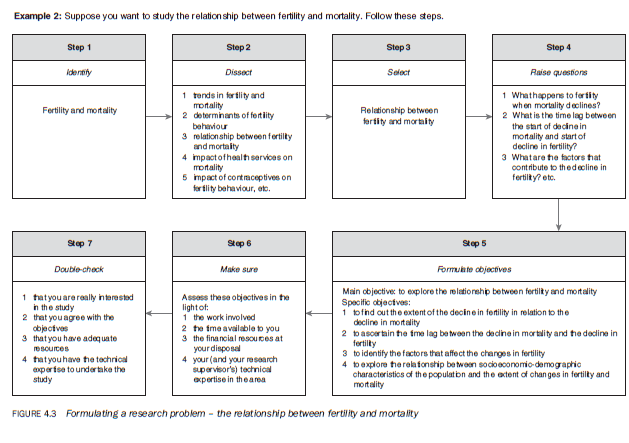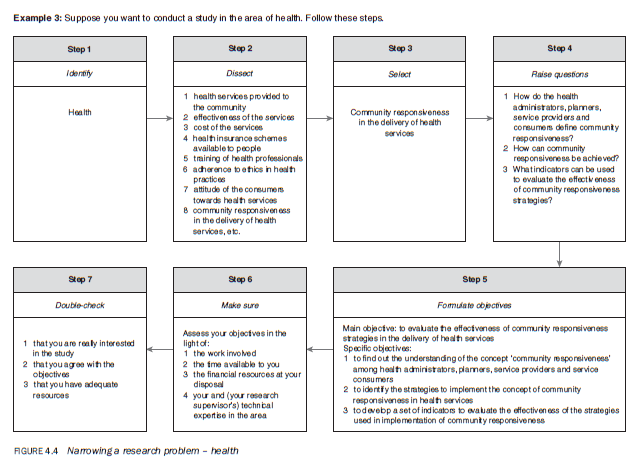Objectives are the goals you set out to attain in your study. Since these objectives inform a reader of what you want to achieve through the study, it is extremely important to word them clearly and specifically.
Objectives should be listed under two headings:
- main objectives;
- subobjectives.
The main objective is an overall statement of the thrust of your study. It is also a statement of the main associations and relationships that you seek to discover or establish. The subobjectives are the specific aspects of the topic that you want to investigate within the main framework of your study.



Subobjectives should be numerically listed. They should be worded clearly and unambiguously. Make sure that each subobjective contains only one aspect of the study. Use action-oriented words or verbs when writing your objectives. The objectives should start with words such as ‘to determine’, ‘to find out’, ‘to ascertain’, ‘to measure’ and ‘to explore’.
The way the main objectives and subobjectives are worded determines how your research is classified (e.g. descriptive, correlational or experimental). In other words, the wording of your objectives determines the type of research design you need to adopt to achieve them. Hence, be careful about the way you word your objectives.
Irrespective of the type of research, the objectives should be expressed in such a way that the wording clearly, completely and specifically communicates to your readers your intention. There is no place for ambiguity, non-specificity or incompleteness, either in the wording of your objectives or in the ideas they communicate. Figure 4.5 displays the characteristics of the wording of objectives in relation to the type of research study.

If your study is primarily descriptive, your main objective should clearly describe the major focus of your study, even mentioning the organisation and its location unless these are to be kept confidential (e.g. to describe the types of treatment programme provided by [name of the organisation] to alcoholics in [name of the place] or to find out the opinion of the community about the health services provided by [name of the health centre/department] in [name of the place]). Identification of the organisation and its location is important as the services may be peculiar to the place and the organisation and may not represent the services provided by others to similar populations.
If your study is correlational in nature, in addition to the first three characteristics shown in Figure 4.5, the wording of the main objective should also include the main variables being correlated (e.g. to ascertain the impact of migration onfamily roles or to compare the effectiveness of different teaching methods on the comprehension of students).
If the overall thrust of your study is to test a hypothesis, the wording of the main objectives should also indicate the direction of the relationship being tested (e.g. to ascertain if an increase in youth unemployment will increase the incidence of street crime, or to demonstrate that the provision of maternal and child health services to Aboriginal people in rural Australia will reduce infant mortality).
Source: Kumar Ranjit (2012), Research methodology: a step-by-step guide for beginners, SAGE Publications Ltd; Third edition.

29 Jul 2021
29 Jul 2021
29 Jul 2021
29 Jul 2021
29 Jul 2021
29 Jul 2021